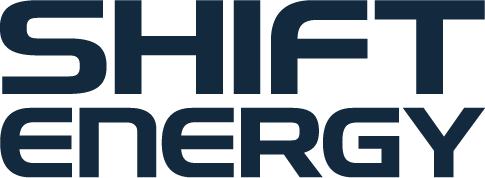Many large buildings are managed by a Building Automation Systems (BAS) or Building Management Systems (BMS). These platforms have been around for decades, designed to help building operators manage various functions in their facilities.
Most BAS systems do a good job on the basics. They help maintain a consistent temperature but that usually comes with higher energy costs and increased wear and tear on HVAC equipment. The reality is that a BAS or BMS are not engineered to maximize operational efficiency. That means higher energy consumption and carbon emissions. With growing pressure on building owners and operators to cut costs and carbon emissions, many people are seeking a better solution to manage their building’s HVAC system, generally the single largest consumer of energy.
That’s where SHIFT Energy comes in. Our energy intelligence platform works with the BAS and existing equipment to achieve much greater performance, delivering up to a 20 percent reduction in energy consumption and the resulting carbon emissions.
Doesn’t a BAS Optimize Performance?
One question we get quite a bit is, “can’t I use my BAS to optimize HVAC performance?”
Not really.
A BAS is generally programmed to maintain a consistent level of heating or cooling but that results in excessive energy usage and unnecessary strain on equipment. A BAS simply doesn’t have higher-level programing capabilities needed to proactively cut energy consumption like SHIFT does.
Operators and consultants can make tweaks to the BAS to modestly improve results, but compared to SHIFT, that still leaves money on the table and carbon in the air. There is a better way.
Predictive Capabilities
The SHIFT solution sits on top of the BAS and uses Machine Learning, a vital component of Artificial Intelligence (AI), to automatically optimize the performance of HVAC systems. SHIFT’s advanced Machine Learning processes develop predicative capabilities for specific buildings, using inputs generally not available to the BAS to improve overall performance. Those inputs can be things like weather forecasts, electricity rate forecasts, Demand Management notifications, event schedules, IoT devices and so forth, with new integrations being added regularly. That predicative capability is not offered by a BAS.
Meeting Specific Business Needs
SHIFT builds on the functionality of the BAS to deliver much better results. For example, SHIFT enables energy optimization to meet specific business requirements – such as addressing Demand Management, energy efficiency, carbon reduction or thermal comfort. SHIFT focuses on the “4 Cs” – consumption, carbon, cost and comfort. Our solution cuts energy consumption, lowers carbon emissions, reduces energy costs and boosts occupant comfort – with the ability to prioritize any of these based on the specific needs of a building or portfolio of buildings. A BAS doesn’t offer that kind of customization.
Sustainability Reporting and Management
Another key point of difference is sustainability management. SHIFT delivers real value to Sustainability and Energy Managers, offering GRI-302 and GRI-305 compliant carbon emissions data at the building and portfolio level. This enables building owners to track and manage their carbon emissions, something required by law in an increasing number of locations. SHIFT’s emissions data is reported in our own dashboard and can also be imported into popular ESG (Environment, Social, Governance) reporting platforms.
Consistent Set of Algorithms
There are many consultants and engineering firms that claim to boost BAS performance. In fact, many of them can deliver improvements over the baseline BAS operations. The challenge is, however, there is a wide variety of approaches that these local consultants use to get results, some of which are more effective than others, and all of them difficult to view by the building owners. A change made to the BAS by a consultant – or a building operator – can often have a “butterfly effect” – a negative unintended consequence elsewhere in the HVAC system that negates the benefit of the change or even makes things worse. With SHIFT, operators and energy managers get a consistent methodology and set of algorithms driving efficiency. That also allows for clear comparison between buildings in a portfolio.
Operator Involvement
SHIFT isn’t a “black box.” Operators can login to the platform and understand – in real-time – how SHIFT is delivering energy efficiency. Working with operators is a key part of our approach to deploying the SHIFT solution – we collaborate with them to understand the building and maximize energy efficiency and carbon savings. In fact, beyond operators, we work with a range of customer stakeholders when we deploy the SHIFT solution to make sure everyone is involved and understands the range of benefits that can be achieved.
Fault Detection & Diagnostics
A BAS can alert a building operator with an alarm when a particular piece of equipment is not meeting its set-point but that generally overwhelms the operator with frequent alarms with almost no insight to the cause or solution to the problem. The SHIFT platform delivers real-time Fault Detection & Diagnostics (FD&D) through our dashboard, providing actionable insights that help operators identify and resolve issues that impact performance.
Space-based Scheduling
Energy is a “just-in-time” service. Making sure that energy is used at the right time and in the right way is key to achieving efficiency. SHIFT simplifies space management by mapping building automation systems equipment to specific locations. That means operators no longer must schedule multiple pieces of equipment individually through the BAS but instead can schedule spaces quickly through the EOS Planner. It allows scheduling to take place by day, month or the equipment scheduled. SHIFT’s solution also integrates with event schedules and calendar applications to simplify space-based scheduling.
The EOS Planner is also an important tool for Demand Management. Many jurisdictions have Demand Management events that can significantly increase energy costs for buildings if not addressed. SHIFT supports proactive management of Demand Management occurrences to reduce energy consumption during targeted periods without causing discomfort to building occupants.
A BAS Only Goes So Far
A BAS will only get a building so far when it comes to energy efficiency and cutting carbon emissions. It is simply not engineered to deliver predicative energy management that boosts building performance.
SHIFT’s energy intelligence platform is designed to bring immediate results that continue into the future by directly and consistently addressing the “4 Cs” – consumption, carbon, cost and comfort. By adding SHIFT’s solution to your building or portfolio of buildings, you will see:
- Lower rates of energy consumption
- Lower energy costs
- Lower carbon emissions
- Enhanced comfort of building occupants
- Longer asset life
The pressure on building owners and operators to cut costs and carbon emissions is growing every day. Reach out if you are interested in boosting your building or portfolio of building’s efficiency without investing in expensive new HVAC equipment.

